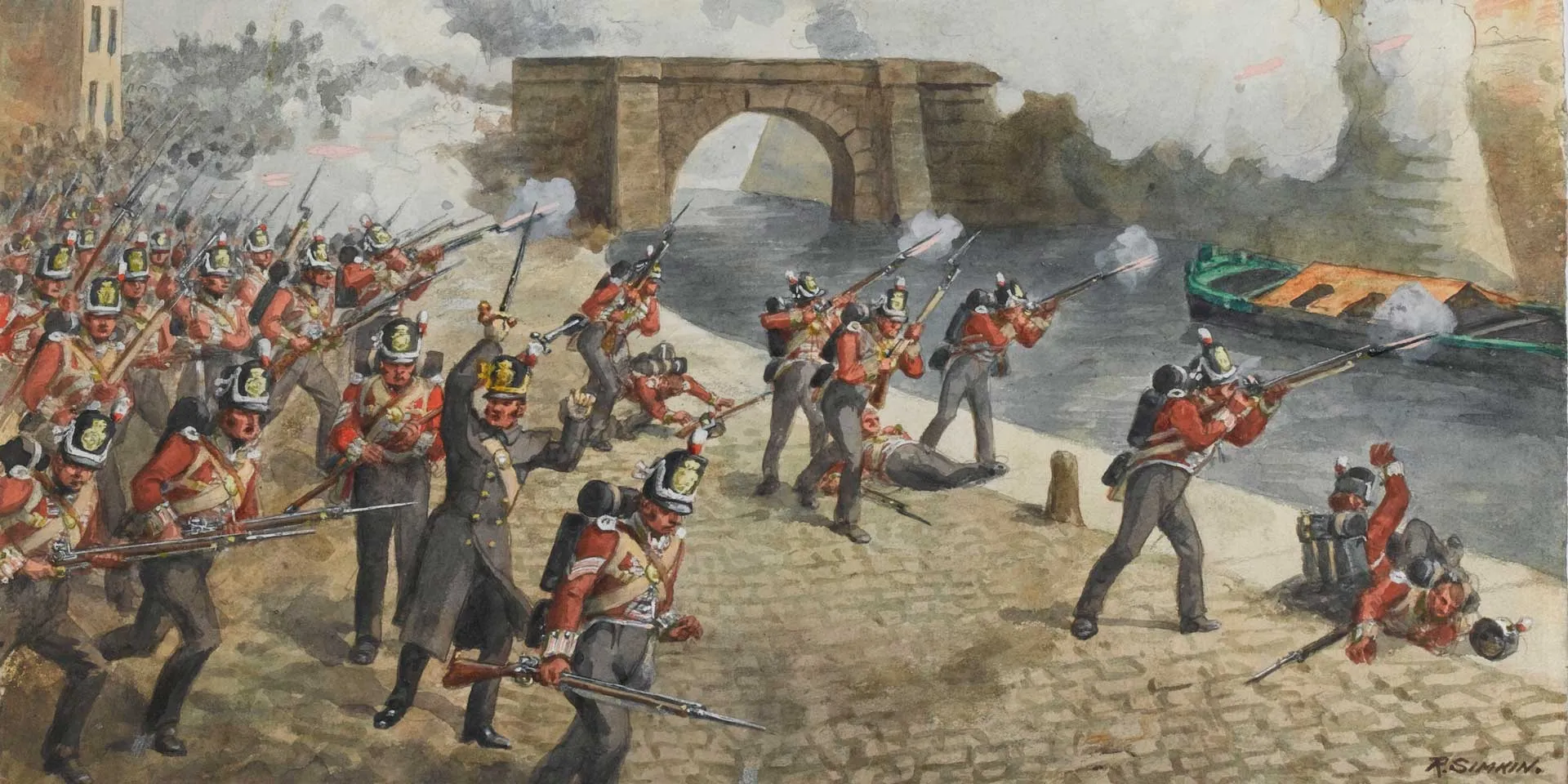Origins
In June 1689, King William III commissioned Zacharaiah Tiffin to raise a regiment to defend the Protestant colony at Enniskillen (now in Northern Ireland) against the recently deposed James II. Six months later, he turned it into a regular line regiment on the English establishment.
During the rest of the Nine Years War (1689-97), it fought at the battles of the Boyne (1690) and Aughrim (1691), as well as deploying to Flanders, where it served at Namur (1695). Later, in the War of the Spanish Succession (1702-13), it was sent to the West Indies, where it fought on Guadeloupe.
18th century
The regiment returned to the British Isles in 1715 to fight against the Jacobite Rising, before serving on Jamaica and in Panama during the War of Jenkins’ Ear (1739-43). On returning home again, it helped suppress the Second Jacobite Rebellion (1745-46), serving at Falkirk (1746) and Culloden (1746).
In 1747, the regiment was granted the numeral 27. And, four years later, ‘Inniskilling’ was formally incorporated into its title.
In 1756, it moved to North America, fighting there during the Seven Years War (1756-63) at Ticonderoga (1758-59) and Montreal (1760). It then moved to the West Indies, where it fought on Martinique (1762), Grenada (1762), St Lucia (1762) and Cuba (1762).
After a spell back in Britain, it was sent to Boston. During the American War of Independence (1775-83), it fought at Long Island (1776), White Plains (1776), Brandywine (1777) and Germantown (1777), before deploying to the West Indies and serving on St Lucia (1778), Grenada (1779) and St Eustatius (1781).
During the French Revolutionary Wars (1793-1802), it served in Flanders in 1793-95, before joining the aborted expedition to Quiberon Bay (1795). It then served in the West Indies, fighting on St Lucia (1796), before returning to Europe for the Helder Campaign (1799).
In 1800, the 27th raised a 2nd Battalion from Irish militias. This joined 1st Battalion in raids on the Spanish coast, before moving to Malta and then joining the Egyptian Campaign (1801) and fighting at Alexandria.
Napoleonic wars
2nd Battalion briefly disbanded from 1803 to 1805. Soon after, the regiment raised a new 2nd and 3rd Battalion.
1st Battalion was in southern Italy in 1805, fighting at Maida (1806) and remaining there until 1812. It then deployed to the Peninsular War (1808-14), where it fought at Castella (1813) and Tarragona (1813).
Meanwhile, 2nd Battalion fought in North Germany (1806), before garrisoning Sicily and Malta. In 1813, it also deployed to the Peninsula and joined 1st Battalion at Castella.
The 3rd Battalion had been in the Peninsula since 1808 and fought at Busaco (1810) Badajoz (1812), Salamanca (1812), Burgos (1812), Vitoria (1813), San Sebastian (1813), Sorauren (1813), Bidassoa (1813), Nivelle (1813), Orthes (1814) and Toulouse (1814). In 1814, it joined 1st Battalion in Canada for the latter stages of the War of 1812 (1812-15).
When Napoleon escaped from Elba in 1815, 1st Battalion was recalled from Canada. It arrived back in Europe in time for Waterloo (1815), where around 70 per cent of its men were killed or wounded. The Duke of Wellington called it ‘the regiment that saved the centre of my line’.
Quiz
How did the 27th (Inniskilling) Regiment earn their nickname the 'Skins'?
19th century
In 1817, the 2nd and 3rd Battalions were disbanded. The regiment then garrisoned Ireland, Gibraltar and the West Indies before fighting in South Africa during the Sixth (1834-36) and Seventh (1846-47) Cape Frontier Wars.
After six years in Britain, the 27th deployed to India during the Mutiny (1857-59), taking part in the Gwalior operations. Two decades of garrison service in India, Britain and Malta then followed.
Legacy
In 1881, it was amalgamated with the 108th Regiment of Foot (Madras Infantry) to form The Royal Inniskilling Fusiliers.
Regimental museums
The National Army Museum works with a network of Regimental and Corps Museums across the UK to help preserve and share the history and traditions of the Army and its soldiers.
Discover more about the 27th (Inniskilling) Regiment of Foot by visiting the Inniskilling Museum at Enniskillen Castle.













